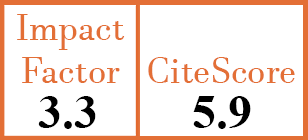Full Papers
CCR4+Tfh2 cells specifically produce IL-4 driving the pathological reaction in IgG4-related disease
M. Akiyama1, K. Yoshimoto2, H. Yasuoka3, S. Ishigaki4, S. Takanashi5, T. Takeuchi6, Y. Kaneko7
- Division of Rheumatology, Department of Internal Medicine, Keio University School of Medicine, Tokyo, Japan. mitsuaki@keio.jp
- Division of Rheumatology, Department of Internal Medicine, Keio University School of Medicine, Tokyo, Japan.
- Division of Rheumatology, Department of Internal Medicine, Fujita Health University School of Medicine, Aichi, Japan.
- Division of Rheumatology, Department of Internal Medicine, Keio University School of Medicine, Tokyo, Japan.
- Division of Rheumatology, Department of Internal Medicine, Keio University School of Medicine, Tokyo, Japan.
- Division of Rheumatology, Department of Internal Medicine, Keio University School of Medicine, Tokyo, Japan.
- Division of Rheumatology, Department of Internal Medicine, Keio University School of Medicine, Tokyo, Japan.
CER17879
2025 Vol.43, N°3
PI 0435, PF 0443
Full Papers
Free to view
(click on article PDF icon to read the article)
PMID: 39625839 [PubMed]
Received: 28/05/2024
Accepted : 07/10/2024
In Press: 29/11/2024
Published: 12/03/2025
Abstract
OBJECTIVES:
Human T follicular helper (Tfh) cells are classified into three subsets: Tfh1, Tfh2, and Tfh17 cells. Among them,Tfh2 cells are defined as CXCR3-negative and CCR6-negative, and may contain diverse cell populations. We examined whether CCR4 serves as a marker for identifying Tfh2 cells that produce interleukin (IL)-4 and its involvement in IgG4-related disease (IgG4-RD).
METHODS:
Single cell analysis of IL-4-producing Tfh subset was performed using multi-colour flow cytometry and t-SNE method. Blood samples were obtained from 23 treatment-naïve patients with active IgG4-RD. CCR4+Tfh2 cells were also assessed in affected tissues of IgG4-RD by flow cytometry and immunohistochemical staining.
RESULTS:
Tfh2 cells expressing CCR4 were identified as Tfh cells that specifically produce IL-4. CCR4+Tfh2 cells showed higher expression of GATA-3 and ICOS than CCR4-Tfh2 cells, while there was no difference in the expression of BCL-6 and FOXP3. The proportion of CCR4+Tfh2 cells in peripheral blood was increased in IgG4-RD compared to healthy controls, and even more CCR4+Tfh2 cells infiltrated into the affected lesions. CCR4+GATA-3+Tfh2 cells diffusely infiltrated tertiary lymphoid tissues and storiform fibrosis lesions. The proportion of CCR4+Tfh2 cells showed a significant correlation specifically with serum IgG4 levels among clinical indicators. Glucocorticoid therapy did not correct the increased proportion of CCR4+Tfh2 cells.
CONCLUSIONS:
CCR4 serves as a marker for identifying Tfh2 cells that specifically produce IL-4. CCR4+Tfh2 cells are a widely present T cell population that infiltrates tertiary lymphoid tissues and storiform fibrosis of IgG4-RD. Glucocorticoid fails to effectively target CCR4+Tfh2 cells that may contribute to a high relapse rate during glucocorticoid tapering in this disease.



